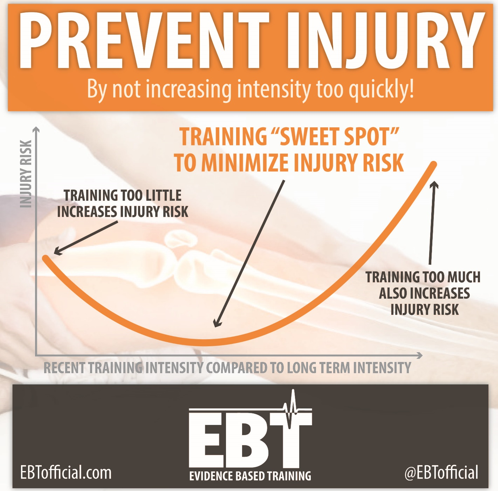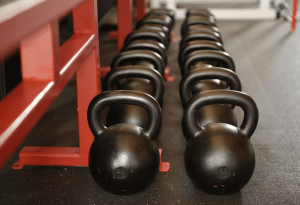You’ve probably heard that training too much can get you injured. You’ve probably also heard that training too little makes you weaker and more likely to get injured. This is the injury paradox. Training can both protect from injury and cause injury. Here’s how to think about injury prevention.
Overtrained injured athletes can’t perform optimally. Neither can undertrained uninjured athletes. Thus there should be a ‘sweet spot’ which maximizes performance.
Athletes should therefore be mindful of what intensity of training they are exposed to. Training intensity can be measured in many ways. Two simple ways is external load (ex % of maximal weight or VO2 max) or internal load (how tired you feel from 1 to 10, ie RPE).
The TYPE of high intensity work is probably what matters for injury risk. For example, for team sports, short, high-intensity acceleration sprints similar to that used in the sport will likely protect against injury, while heavy clean and press weight training probably isn’t going to do much for injury prevention.
Also, increasing intensity too much and too fast also leads to injury. For example, data from professional rugby players indicates that when intensity (RPE) increased by ≥15% from one week to the next, injury risk increased by up to 49%! (1)
In fact a good predictor of injury is how intensive recent training sessions have been compared to the long-term past intensity of training sessions. High intensity sessions will increase fatigue and thus injury risk, especially if the overall past training has been low intensity vice versa (called ratio of the acute:chronic workload).
While the review focuses on sports and not weight lifting, we do think it teaches us to increase weight slowly over time to prevent injuries. As you know, tension builds muscle, but too much tension too fast will do more harm than good.
THE EVIDENCE:
1. The training-injury prevention paradox: should athletes be training smarter and harder? DOI: 10.1136/bjsports-2015-095788
2. Spikes in acute workload are associated with increased injury risk in elite cricket fast bowlers. doi: 10.1136/bjsports-2013-092524









